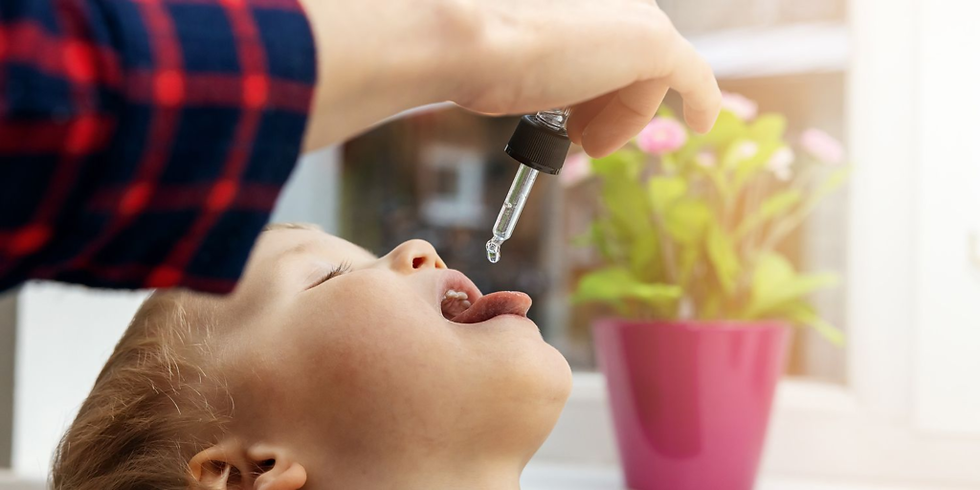How much vitamin D for infants is recommended?
- Sabona Lemessa

- Jun 5, 2023
- 3 min read
The American Academy of Pediatrics and the Canadian Pediatric Society both recommend that newborns and children get 400-600 international units (IU) of vitamin D for infants per day. Most babies, children, and adults do not get enough vitamin D.
Is Vitamin D from the Sun? Is Vitamin D in Food Enough?
Vitamin D can be obtained by diet, milk, or exposure to sunlight. Many children and adults do not get enough direct sun exposure to obtain adequate levels of natural sun-related vitamin D. To avoid UV damage, parents frequently keep their children out of the sun or liberally apply sunscreen, which we advise! We want to avoid skin damage and the danger of skin cancer, even if it means limiting vitamin D absorption from the sun.
Why is vitamin D important?
Vitamin D helps our bodies absorb calcium and phosphorus, which are essential for forming healthy bones. Vitamin D deficiency can cause rickets, a condition in which bones become fragile and improperly constructed. Toddlers or newborns under the age of two who are solely breastfed and do not receive vitamin D supplementation through vitamin D baby drops are at the highest risk of rickets. Even formula-fed babies require vitamin D drops if they consume fewer than 32 ounces of formula each day.
How much vitamin D do children need?
There are a variety of vitamin D supplements available, including vitamin D infant drops. There are chewable multivitamins containing 400 IU of vitamin D, vitamin D drops for babies, liquid form, and pills to take. I prefer the one drop equals 400 or 600 IU type because other multivitamins frequently contain gobs of additional components like sugar and aspartame. Most youngsters who consume a diverse diet do not require a multivitamin containing additional vitamins.
Parents can drop the drop versions directly into the child’s mouth, on the mother’s nipple, on a clean finger, on a pacifier, or add them directly into a bottle of milk.

Vitamin D for kids
How much vitamin D is too much?
Keep the vitamin D baby drops out of reach of prying hands. A multivitamin overdose can be extremely harmful to a child. They can be appealing to children, and we wish to avoid an unintentional overdose. Less than 50,000 IU is unlikely to be harmful.
Vitamin D in food
Some people can get enough vitamin D from food sources, such as milk. I advocate striking a balance between providing vitamin D through food and supplements. Look for vitamin D-enriched foods, such as milk, soy products, and citrus juice.
Vitamin D in milk
One cup of dairy milk or soy milk has approximately 100 IU. Unless your child drinks four full cups or one liter of milk per day, more vitamin D-containing foods or supplementation will be required to meet the 400 IU per day goal, and we prefer to aim for 600 IU per day. Natural sources of vitamin D include eggs, oily salmon, liver, beef, and cheese. However, in order for your child to acquire the necessary daily dose of vitamin D, he or she would need to consume considerable amounts of these foods, such as 4 oz of fatty fish each day.
FAQs
How much vitamin D do children need?
Breastfed children should get 400 IU of vitamin D every day. Begin taking supplements within the first month of life. Formula-fed babies should get 400 IU of vitamin D per day if they do not get 32 oz of formula per day.
Adults and older children should get 600-1000 IU of vitamin D every day. This is ideally obtained through vitamin D-containing meals and supplements.
Is there much vitamin D in milk?
One cup of cow’s milk or an alternative has around 100 IU of vitamin D.
Who requires additional vitamin D?
If your child has a medical condition that predisposes them to vitamin D deficiency or calcium loss, consult with their doctor about how much vitamin D they should take.
Read more on micronutrient deficiency in children.



Comments